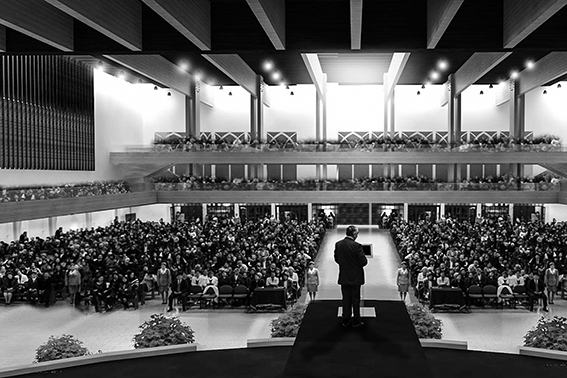Latin American evangelical domus ecclesiae between the end of XIXth and the first half of the XXth century
Protestant Architecture before Vatican Council II
DOI:
https://doi.org/10.17979/aarc.2015.4.0.5121Keywords:
domus ecclesiae, Vatican Council II, protestant architecture, evangelical church, Latin AmericaAbstract
Vatican II inspired a new conception of the Catholic church. In chapter VII of the constitution Sacrosanctum Concilium, the temple is conceived from seven general principles: freedom of artistic styles; fitness for a community liturgy; symbolic capacity; simplicity and authenticity; comfort; open and welcoming home; and renovations of existing buildings. Despite the apparent novelty of the council inspirations about the new liturgy and architecture, these provisions are an update of those driven by the Protestant Reformers, in opposition to Catholic-Roman liturgical practices of the sixteenth century, 400 years before. After the Reformation, the Protestant church is conceived as a place of personal and direct meeting between man and Jesus; between man and his neighbor; and man himself. In Latin America, the architectural guidelines of the Protestant Reformation, associated with the lack of resources and cultural qualities of the population, they manifested in temples conceived as domus ecclesiae, giving priority to the fraternal, egalitarian and communal encounter, long before the Second Vatican Council.
Downloads
Metrics
References
Lévárdy, Ferenc, et. al. 1971. Egyházi épületek és mûtárgyak gondozása [Maintanence of religious buildings and artfacts]. Budapest: Képzõmûvészeti Alap Kiadóvállalata.
Église Nationale Protestante. 1950. Temples de Genève. Ginebra: Éditions A. Jullien.
Estivill Collana, Daniel. 2014. «Apuntes sobre arquitectura sacra contemporánea». Cuestiones Teológicas 95:41-74.
Fernández-Cobián, Esteban. 2005. El espacio sagrado en la arquitectura española contemporánea. Santiago de Compostela: COAG.
Fischer, Jorge. 1984. Historia de la Reforma. Barcelona: CLIE.
Kostof, Spiro. 1988. Historia de la Arquitectura. Madrid: Alianza Editorial.
Le Gendre, Armelle. 2014. Comment regarder... Une eglise: histoire, architecture et culte. París: La Procure.
Morales Folguera, José Miguel. 1979. «Arquitectura religiosa postconciliar. Forma y función». Baética. Estudios de Arte, Geografía e Historia 2-1:47-52.
Muñoz Rodríguez, Rubén. 2012. «Domus Dei y Domus Ecclesiae. El edificio iglesia orientado». Arquitecturas del Sur 042:7-19.
Ordenación General del Misal Romano. 1975. Consultado el 20 de agosto de 2015. https://www.jmj2011iglesiaactualidad.files.wordpress.com/2 012/11/ogmr1975.pdf.
Pérez Oyarzun, Fernando et al. 1997. Iglesias de la Modernidad en Chile. Precedentes europeos y ameri- canos. Santiago de Chile: Ediciones ARQ.
Pietri, Charles. 1997. «Recherches sur les domus ecclesiae». Publications de l’École française de Rome 234.1:127-145.
Ramírez, Alonzo, trad. 1999. Confesión de Fe de Westminster y Catecismo Menor. Barcelona: CLIE. Traducción de la edición original publicada el 29 de abril de 1647.
Schnell, Hugo. 1974. La arquitectura eclesial del siglo XX en Alemania. Munich/Zurich: Schnell&Steiner.
Vidal Rojas, Rodrigo. 2012. Entender el templo pentecostal. Elementos, fundamentos, significados. Concepción: CEEP.
Waisberg, Myriam. 1992. La arquitectura religiosa de Valparaíso. Siglo XVI-siglo XIX. Santiago: Fondo Nacional de Desarrollo Científico y Tecnológico.
















